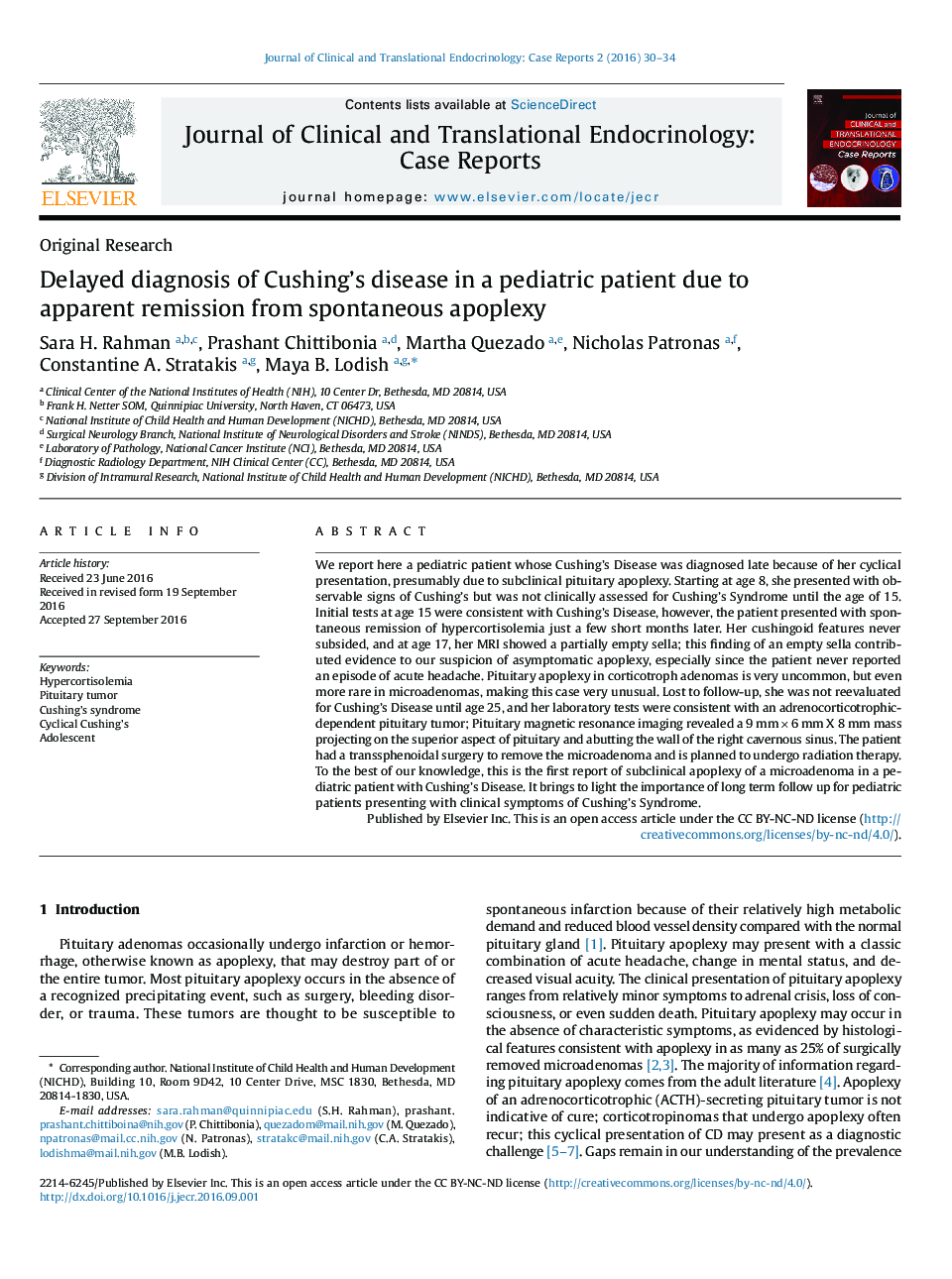| Article ID | Journal | Published Year | Pages | File Type |
|---|---|---|---|---|
| 8631784 | Journal of Clinical and Translational Endocrinology: Case Reports | 2016 | 5 Pages |
Abstract
We report here a pediatric patient whose Cushing's Disease was diagnosed late because of her cyclical presentation, presumably due to subclinical pituitary apoplexy. Starting at age 8, she presented with observable signs of Cushing's but was not clinically assessed for Cushing's Syndrome until the age of 15. Initial tests at age 15 were consistent with Cushing's Disease, however, the patient presented with spontaneous remission of hypercortisolemia just a few short months later. Her cushingoid features never subsided, and at age 17, her MRI showed a partially empty sella; this finding of an empty sella contributed evidence to our suspicion of asymptomatic apoplexy, especially since the patient never reported an episode of acute headache. Pituitary apoplexy in corticotroph adenomas is very uncommon, but even more rare in microadenomas, making this case very unusual. Lost to follow-up, she was not reevaluated for Cushing's Disease until age 25, and her laboratory tests were consistent with an adrenocorticotrophic-dependent pituitary tumor; Pituitary magnetic resonance imaging revealed a 9 mm Ã 6 mm X 8 mm mass projecting on the superior aspect of pituitary and abutting the wall of the right cavernous sinus. The patient had a transsphenoidal surgery to remove the microadenoma and is planned to undergo radiation therapy. To the best of our knowledge, this is the first report of subclinical apoplexy of a microadenoma in a pediatric patient with Cushing's Disease. It brings to light the importance of long term follow up for pediatric patients presenting with clinical symptoms of Cushing's Syndrome.
Related Topics
Life Sciences
Biochemistry, Genetics and Molecular Biology
Endocrinology
Authors
Sara H. Rahman, Prashant Chittibonia, Martha Quezado, Nicholas Patronas, Constantine A. Stratakis, Maya B. Lodish,
